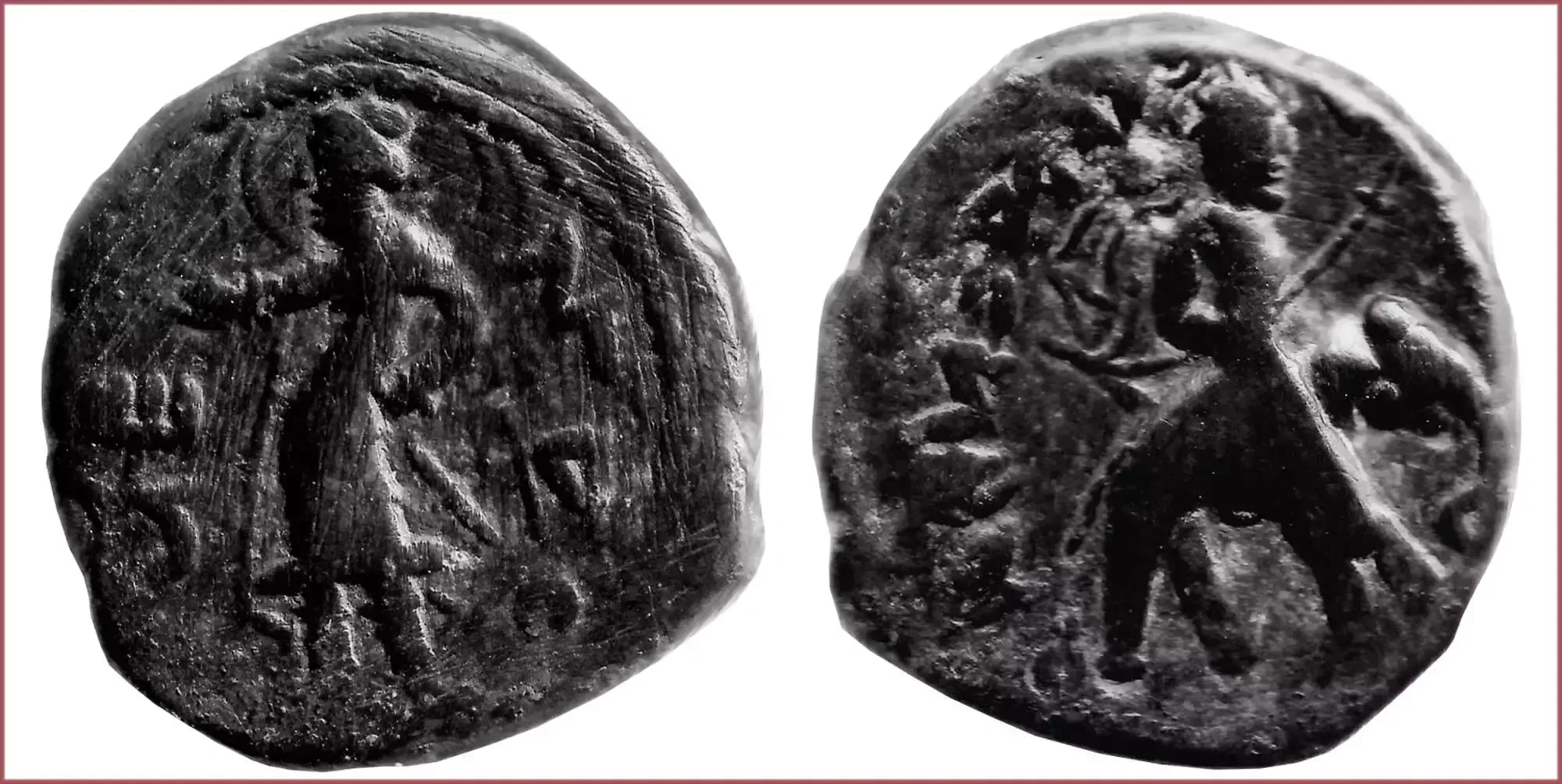TETRADRACHM: COIN OF KUSHAN EMPIRE (INDIA)
Tetradrachm, 155-187: Kushan Empire (India)
Ruler: Huvishka — emperor of the Kushan Empire.
MAO: the name of the moon god is mistakenly given, but another deity is depicted (different sources give conflicting information about who exactly is depicted). There is a fairly large group of Kushan coins with this particular discrepancy.
Kushan god, deity Oesho (Bactrian "Οηϸο"); likeness of Shiva /but some sources indicate that Athsho is depicted — God of metals/.
Tamga of the Kushan emperor on the left (trident?).
Legend in Bactrian language (Greek alphabet): þAONANOþ OOηþKE KOþANO (Huvishka — King of Kushan Kings).
The emperor on an elephant with an ankus (elephant driver's tool) in his hand.
- Copper: 25 mm - 15.8 g
- Reference price: 25$
COIN TETRADRACHM — WHERE & WHEN (coins catalog: by names & emitents)
- ANCIENT GREECE (Greek city-states, 6th-1st centuries BC): tetradrachm = 4 drachm
- ROMAN PROVINCES (2th century BC — 3rd century AD): tetradrachm = 4 drachm
- GREATER ARMENIA (1st century BC): tetradrachm = 4 drachm
- ANCIENT INDIA (Indo-Greek Kingdom, Indo-Scythian Kingdom, Kushan Empire... 3rd century BC — 4th century AD): tetradrachm = 4 drachm
- NEPAL (5th-7th centuries AD): tetradrachm = 4 drachm
- PERSIAN EMPIRES (5th century BC — 2nd century AD): tetradrachm = 4 drachm
- PHOENICIAN CITIES (4th century BC — 1st century AD): tetradrachm = 4 drachm
- MESOPOTAMIA (2th century BC — 3rd century AD): tetradrachm = 4 drachm
- CARTHAGINIAN EMPIRE (5th-3rd centuries BC): tetradrachm = 4 drachm
- ANCIENT EGYPT (Ptolemaic Kingdom, 5th-1st centuries BC): tetradrachm = 4 drachm
- CENTRAL AND EASTERN EUROPEAN CELTS (4th-1st centuries BC): tetradrachm (celtic tetradrachm) = 4 drachm
TETRADRACHM as coin name.
Tetradrachm (Greek "τετράδραχμον") — large historical silver coin equal to 4 drachm. It is considered a coin, first of all, of Ancient Greece. Such a statement is generally accepted. However, not everyone knows, but in numismatics, tetradrachms that are not Greek or even not made of silver are also considered.
The earliest tetradrachm is considered to be an ancient Greek coin of the beginning of the 6th century BC the city of Athens. It is she (several types are known) that can be called a classic tetradrachm and one of the most recognizable coins of the world among numismatists of all times and nations (moreover, her image is found on a number of coins of various modern states). This iconic coin contained a portrait of the goddess Athena, an image of an owl (a symbol of wisdom) and the inscription “ΑΘΕ” (an indication of the coin's origin in Athens). Weight — about 17 g.
Tetradrachm of Alexander the Great is also widely known.
Later, over the course of several centuries, hundreds of types of silver tetradrachms of Greek cities and colonies were appeared, which had a weight similar to the Athenian prototype.
Numerous Celtic tetradrachm with, as a rule, a characteristic primitive image of a horse and a minimalist stylized portrait stand out.
From time to time, Roman provincial tetradrachms (silver, billon, potin, bronze, copper) that were in circulation in the territories of modern Egypt (Alexandria), Syria (Antioch), Turkey (Cappadocia) are found at auctions... Initially, such coins were equated to 4, and later to 3 Roman denarii.
In numismatic copper / bronze tetradrachms of the Kushan Empire stand on the side. Often in collections you can find similar coins of the Kushan rulers Kanishka and Huvishka.
The name of the coin tetradrachm literally translated from Greek means "four drachmae" (from the Greek "τετρα" — four). By analogy, other fractional drachm denominations were also issued in Ancient Greece — hemidrachm (half a drachm), didrachm (two drachmae), tridrachm (three drachmae)...

